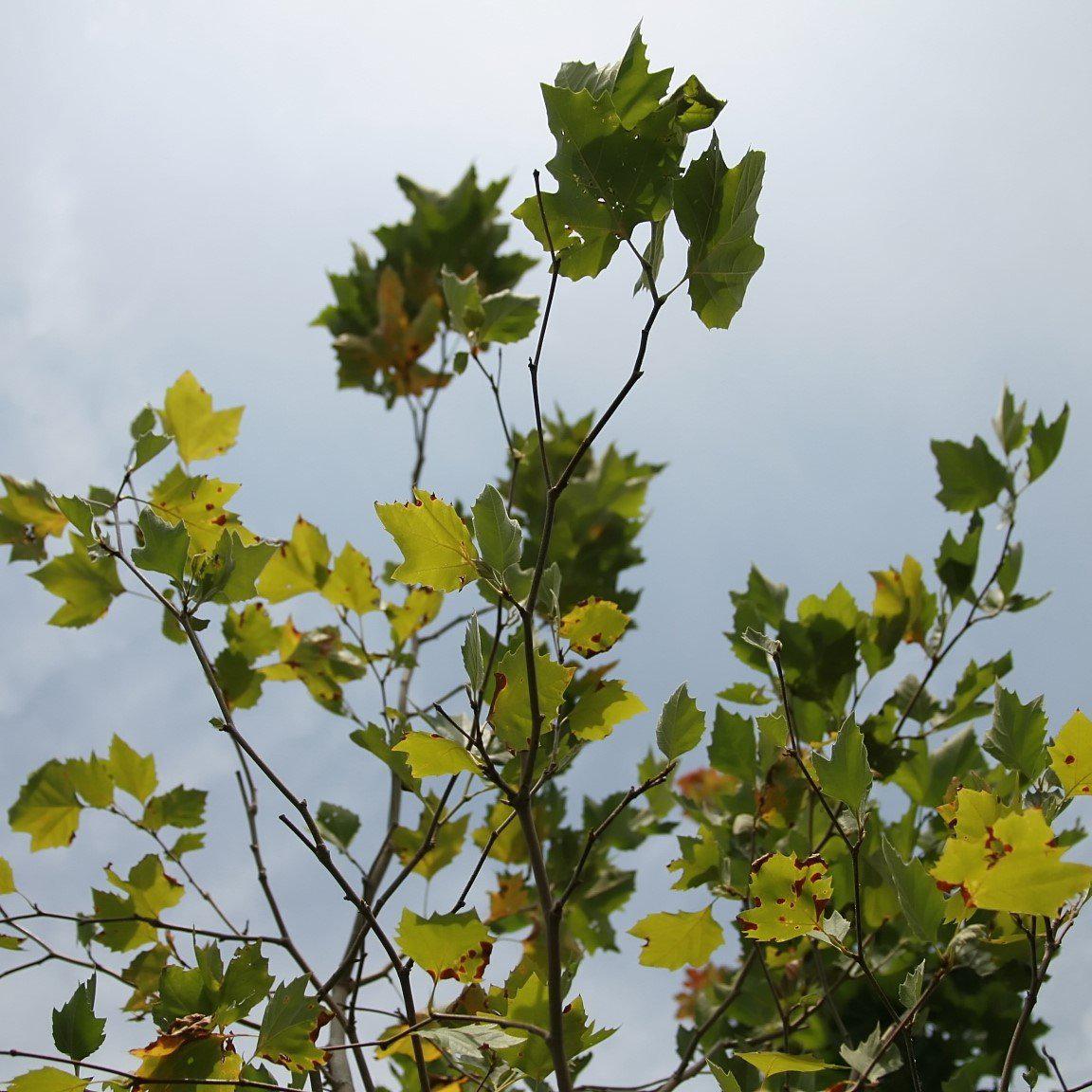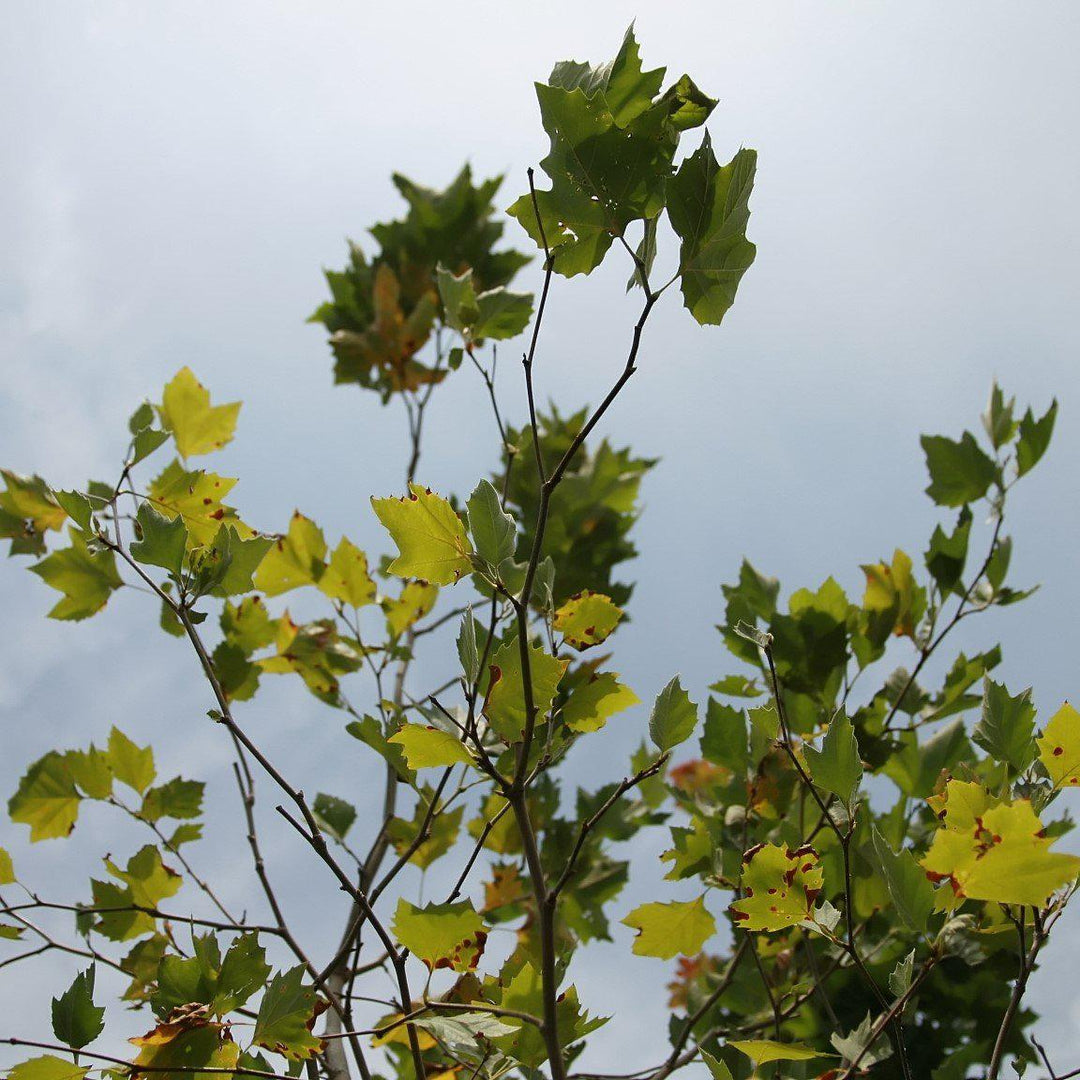The Bloodgood London Planetree, also known as the London Plane or Platanus x acerifolia 'Bloodgood,' is a popular tree known for its attractive features. Here's what you need to know about it:
-
Appearance: The Bloodgood London Planetree is a large, deciduous tree that can reach heights of 70-100 feet (21-30 meters) with a spread of 50-80 feet (15-24 meters). It has a broad, rounded canopy with distinctive exfoliating bark that reveals patches of cream, green, and brown. The leaves are large, maple-like, and deep green in color, turning yellow-brown in the fall.
-
Growth: This tree has a fast growth rate, making it an excellent choice for quickly establishing shade in landscapes. It is known for its ability to tolerate urban conditions, including pollution and compacted soil.
-
Landscape Use: The Bloodgood London Planetree is commonly used as a shade tree in parks, large gardens, and along streets. Its attractive bark and large leaves make it a visually appealing choice for many landscapes.
|
Type: |
|
|
Origins: |
P. occidentalis x P. orientalis |
|
Height: |
55' - 65' |
|
Spread: |
20' - 40' |
|
Spacing: |
30’ |
|
USDA Hardiness Zone: |
4 - 8 |
|
Culture: |
|
|
Bloom Color: |
Green(male), Red(female) |
|
Season of Interest: |
MAINTENANCE NEEDS: High Maintenance. Water regularly. A messy tree with leaf, bark and fruit litter. Cankerstain is a concern that can be fatal. Anthracnose, leaf spot, canker, and powdery mildew may occur. Pests include Japanese beetles, borers, scale, and mites.
LANDSCAPE USES: Specimen or mass plantings, Naturalized Areas, Shade Tree, and Screening.
COMPANION PLANTS: Hosta, Coral Bells, Hydrangea
IMAGES: Photo by David J. Stang, Platanus x acerifolia Bloodgood 2zz, CC BY-SA 4.0, (2) Sheila Sund from Salem, United States, Bark (8425283185), CC BY 2.0



























































